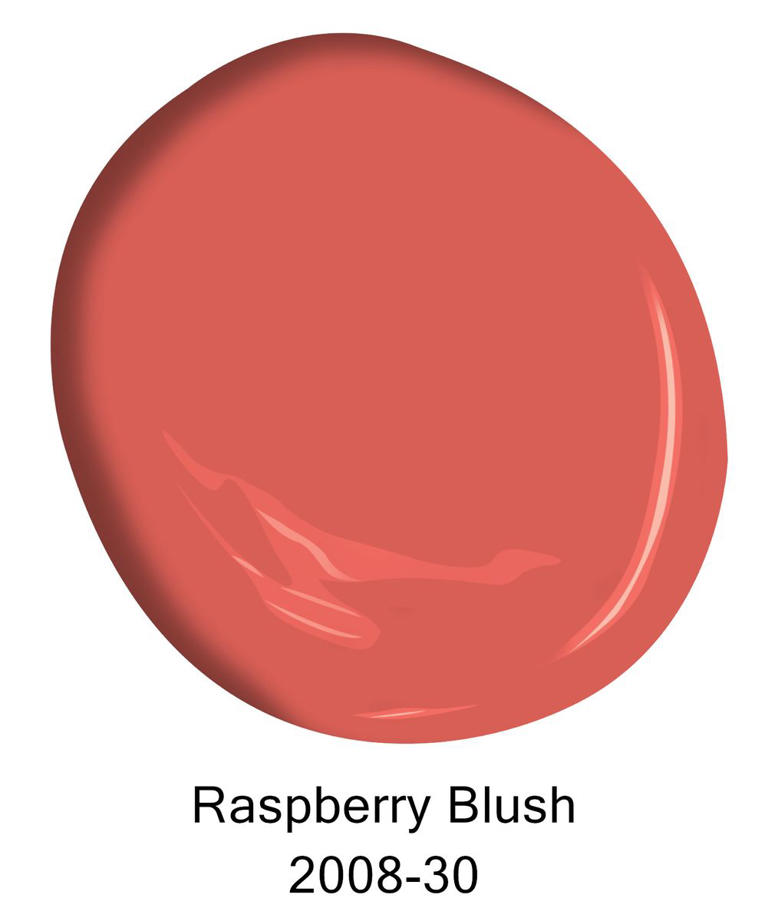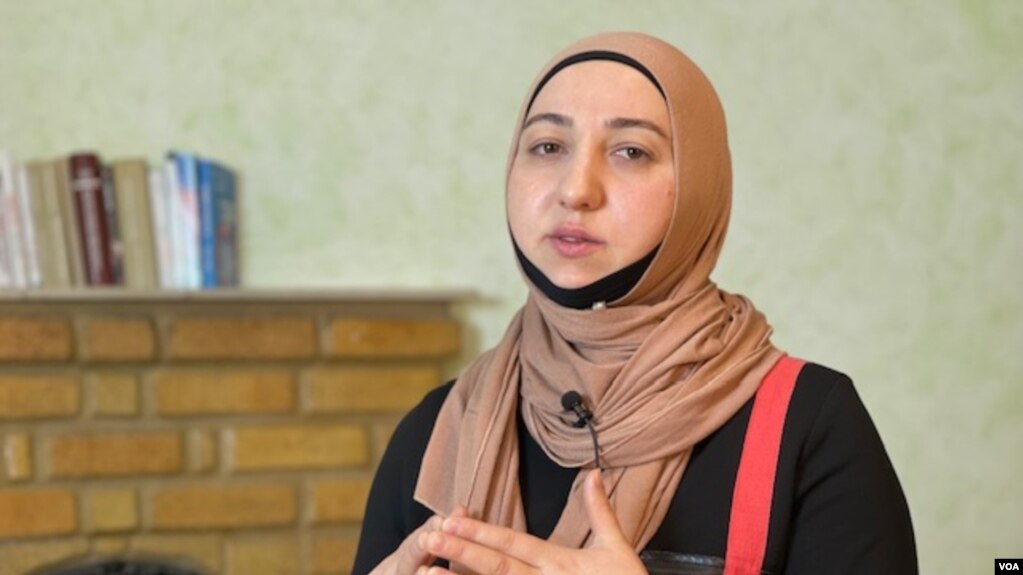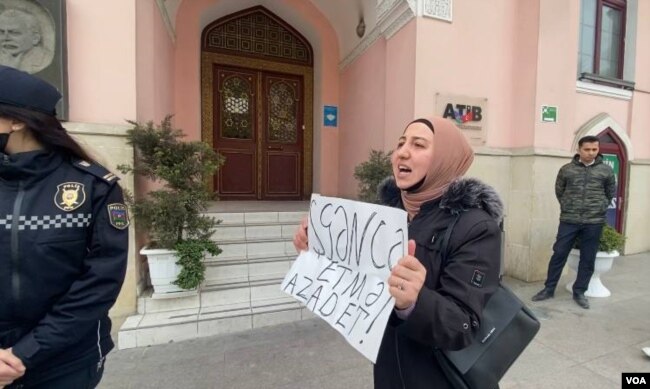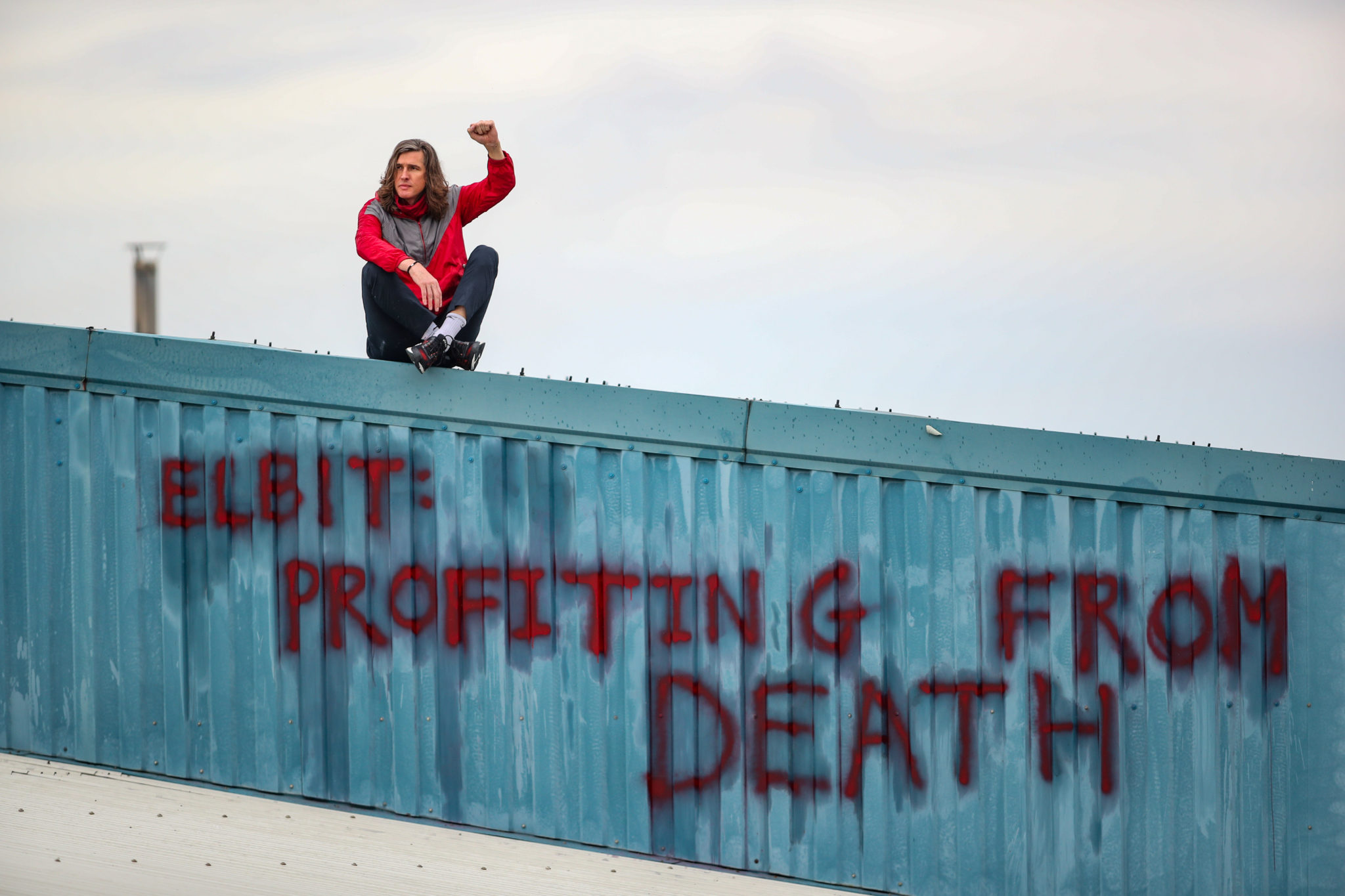Story by Kelly Allen • 9h ago

raspberry blush benjamin moore color of the year 2023© Benjamin Moore
Over the last several years, muted colors have encouraged serenity in our homes. Last year, it was all about green, fostering a connection with nature. Now, House Beautiful can exclusively reveal, Benjamin Moore is looking to a bolder, more courageous future with its Color of the Year for 2023: Raspberry Blush (2008-30). The saturated red-orange is basically the best color in a really good sunset, and it’ll inspire you to break free from your color comfort zone.
“It's a really charismatic color and doesn't sit quietly on the wall,” says Andrea Magno, color marketing and development director at Benjamin Moore. “It's about awakening our senses and getting people to engage with a vivacious color.”
Notably, Raspberry Blush marks a pull toward warmer hues. “We've had colors that are on the cooler side of the color wheel for a number of years, and now we're really starting to see a shift to the warmer colors,” Magno says.

chair with raspberry blush on the wall© Benjamin Moore
Playing with Raspberry Blush can mean blanketing your walls with it—like as a modern take on the red dining room of the past—or incorporating it in a smaller way through a painted piece of furniture. No matter how much surface area you allot for the color, it’ll bring high energy into any space.
Raspberry Blush also sets the stage for Benjamin Moore's color trends palette for 2023. The eight-color palette features an eclectic mix of colors with nostalgic references to periods like the '80s and '90s as well as deeply saturated hues found in the wild. “A lot of times people talk about (and we've done it, too) looking at nature as a point of inspiration,” Magno explains. “But for this year, instead of looking at more organic, vegetal colors, we were looking at the standout colors—the fiery colors of a sunset, tropical flowers, the depths of the Mediterranean.”

color trends palette benjamin moore 2023 color of the year© Benjamin Moore
To celebrate Raspberry Blush, Benjamin Moore tapped the electro-funk duo Chromeo to bring the color's personality to life through a new song fittingly called “Raspberry Blush.” You can also find eight playlists dedicated to each color in the palette on Spotify for an immersive visual and audible experience—perfect for putting on the loudspeaker as you give your home a paint refresh!
Pantone’s 2023 Color of the Year Is an Unsuspecting Traveler’s Dream — Here's Where You Can See It Around the World
Viva Magenta is Pantone's 2023 Color of the Year, and you can see it in real life, from the Netherlands to Vietnam.
Pantone is just like us, in the sense that they, too, are setting their intentions for the year — one filled with strength and energy. The Color of the Year for 2023 is Viva Magenta, which the company describes as powerful and empowering. “Viva Magenta is brave and fearless, and a pulsating color whose exuberance promotes a joyous and optimistic celebration... [It] revels in pure joy, encouraging experimentation and self-expression without restraint.” A year surrounded by joy and self-expression sounds like a year well spent to us.
FROM LEFT: NANTONOV/GETTY IMAGES, COURTESY OF PANTONE; BACKGROUND: MANAN VATSYAYANA/GETTY IMAGES
Luckily, you can spot this shade throughout your travels, too. From opulent hotels in Dubai to salt pans off the coast of Portugal, here’s where you can find the 2023 Pantone Color of the Year around the world.
Netherlands
JACOBH/GETTY IMAGES
Some of the most beautiful and famous flowers can be found at Keukenhof, also known as the Garden of Europe. Keukenhof is one of the largest flower gardens in the world, home to more than seven million blooms. It's located in Lisse, covering 32 hectares, and can be reached in about 30 minutes from The Hague, Haarlem, Leiden, and Amsterdam. Travel to the Netherlands in mid-April to see the tulips at their best. Tulip season runs from the end of March until mid-May, but the flowers are usually at their peak halfway through April. The pink tulip is a symbol for caring and good wishes, perfect for leading us into the new year.
Santorini, Greece
ALEKSANDARGEORGIEV/GETTY IMAGES
The flight from Amsterdam to Santorini is less than four hours, meaning you can go from walking the rows of multicolored tulips to seeing blooming bougainvillea climbing the traditional white and blue houses around the Greek island in no time. Bougainvillea is one of Greece's most beloved flowers, and they bloom between early spring and late autumn. And nothing makes a magenta flower pop like having the Aegean Sea as your backdrop.
Hanoi, Vietnam
NHAC NGUYEN/GETTY IMAGES
Quang Phu Cau, on the outskirts of Hanoi, is known as one of the “incense villages.” Ahead of the Lunar New Year celebrations — called Tet in Vietnam — you'll find hundreds of bright-pink incense sticks fanned out like bouquets along the streets and courtyards. The holiday's full name is Tet Nguyen Dan, which means “feast of the first morning.” At midnight on Jan. 31, or the last day of the old year (giao thua), families burn the pink-colored incense to invite deities and ancestors to gather. When the incense burning ends, everyone comes together to eat and wish each other a happy new year. The best time to visit and experience this cultural event is January, right before the Lunar New Year on Feb. 1.
Iceland
ELENA PUEYO/GETTY IMAGES
Some of the best places to see the northern lights include the Nordic countries of Iceland, Norway, Sweden, and Finland, all of which lie within or near the Arctic Circle. Iceland tends to be the least frigid of the bunch, making it slightly easier to stand the cold temperatures and experience the light show in the skies. September through March is the peak season for northern lights viewing, due to the longer nights, and pink auroras are far rarer than green ones. Just make sure to stock up on coffee and be on the lookout as they can appear any time between dusk and dawn.
Cape Town, South Africa
FIVEPOINTSIX/GETTY IMAGES
The brightly colored neighborhood of Bo-Kaap, which translates to “above the Cape,” is located at the foot of Signal Hill in Cape Town. Today, the area — formerly known as the Malay Quarter — is the city's oldest surviving residential neighborhood, as well as a historical hub of Cape Malay culture. It's filled with houses and mosques dating back to the 1700s, including the Auwal Mosque, which was built in 1794. Bo-Kaap is also home to the largest grouping of pre-1850 architecture in South Africa. Originally, the houses in this neighborhood were leased to the southeast Asian slaves. While on lease, they were required to be painted white. When this rule was lifted and homes were able to be purchased, they were all painted in vibrant colors as a symbol for joy and freedom.
Mysore, India
JOHN HARPER/GETTY IMAGES
There may be no better place to experience a diverse array of vivid colors than an Indian spice market. Namely, the famous Devaraja Market in Mysore, India, sells everything from bright flowers to fresh fruits to cones of colorful kumkum powder. Kumkum powder is used for religious and social markings in India, as well as thrown in the air during Holi. The colorful powder can be created with a number of local ingredients for a variety of shades, but the natural kumkum is made with turmeric treated with slaked lime to create the classic deep red color.
Cusco, Peru
JOAO BENAVIDES/GETTY IMAGES
Rainbow Mountain, originally known as Vinicunca, can be found in the Andes mountains of Peru. Although an attraction like this feels like it should have always been a part of history, it wasn't until 2015, when the snow covering melted away, revealing the naturally colored mountain underneath. The rainbow-like appearance was formed by mineral sediments from the area, creating the layered hues of gold, lavender, red, and turquoise. Rainbow Mountain falls around 62 miles from Cusco’s city center, and given that it stands more than 16,000 feet above sea level, it’s recommended you spend a few days in the region getting acclimatizing to the high altitude before attempting a hike. The best weather for a memorable trek comes between March and November, with the bluest skies from June to August.
Ria Formosa Natural Park, Portugal
DONWOGDO/GETTY IMAGES
A few times a year, what seems like magically, the salt pans in Portugal’s Ria Formosa Natural Park turn from their standard ocean blue-green color to a pink hue befitting Pantone's 2023 Color of the Year without any human interference. This natural phenomenon is actually created by an algae that exists in salt lakes. It’s the substances made from this specific algae, paired with the high salt content found in these pans, that yields this unique shade. Even better, flamingos love the algae found here and can often be spotted in and around the salty waters from November to March.
Burj Al Arab Jumeirah, Dubai
COURTESY OF BURJ AL ARAB JUMEIRAH
While we love being surrounded by Pantone's 2023 Color of the Year in nature, we also love experiencing the shade in the lap of luxury. Built on a human-made island in Dubai’s Arabian Gulf, Burj Al Arab Jumeirah fits every definition of the word luxury — and the opulent, 8,396-square-foot Royal Suite on the 25th floor takes the cake. The two-floor suite features a marble staircase and elevator, as well as a sitting room, banquet hall, dining room, study, and primary bedroom where everything from the sheets on the rotating canopy bed to the floor-to-ceiling walls are covered in the jewel tone. While the bathroom isn’t painted in Viva Magenta, the stand-alone marble tub still gets an honorable mention in our book.
Cranberry Highway, Wisconsin
KLBAHR/GETTY IMAGES
Wisconsin may be known for its cheese, but it's also home to miles of cranberry marshes. In fact, the state produces about 60 percent of the country’s cranberries and more than 50 percent of the world’s share. Visitors here will find the Cranberry Highway, which stretches for 50 miles along century-old marshes. The cranberry harvest season happens in fall, specifically from late September to late October, meaning it's the perfect time to admire the cranberry-magenta hues, as well as partake in vine pickings, tastings and samplings, tours, and museum visits. In some places like Wetherby Cranberry Co. in the town of Warrens, you can even don your own pair of waders and get right in.
Havana, Cuba
MABOHH/GETTY IMAGES
Havana can easily be identified as one of the most colorful cities in the world. Varying shades of blue, purple, red, and pink line the streets, from vintage cars to old architecture, making this city a prime spot for seeing the Color of the Year. That said, getting to Cuba requires some planning — you need a tourist card (or visa), travel insurance, and a self-certification under one of 12 travel categories of authorized travel to Cuba.
:max_bytes(150000):strip_icc():format(webp)/TAL-header-VIVAMAGENTA0123-d53b299baf4149a9858a9248f8b4d734.jpg)
:max_bytes(150000):strip_icc():format(webp)/TAL-tulips-keukenhof-garden-netherlands-VIVAMAGENTA0123-a023051885b44f538a391dd32fff7658.jpg)
:max_bytes(150000):strip_icc():format(webp)/TAL-santorini-greece-bougainvillea-flowers-VIVAMAGENTA0123-4023018818f8497c93f7b55cb50137b0.jpg)
:max_bytes(150000):strip_icc():format(webp)/TAL-lunar-new-year-hanoi-vietnam-VIVAMAGENTA0123-7dbec5d705694289bf18465ce58b30aa.jpg)
:max_bytes(150000):strip_icc():format(webp)/TAL-iceland-northern-lights-VIVAMAGENTA0123-2bb94d18d09a4e3aa94b4876fab0eb9c.jpg)
:max_bytes(150000):strip_icc():format(webp)/TAL-bo-kaap-cape-town-south-africa-VIVAMAGENTA0123-1721e28e300349428200bb4047b82dce.jpg)
:max_bytes(150000):strip_icc():format(webp)/TAL-mysore-india-spice-market-VIVAMAGENTA0123-2262eaf7c9464ddb98a7ccc0cdab0610.jpg)
:max_bytes(150000):strip_icc():format(webp)/TAL-rainbow-mountain-cuzco-peru-VIVAMAGENTA0123-2123c39d8ebb48ecae9a89e85ea423b7.jpg)
:max_bytes(150000):strip_icc():format(webp)/TAL-salt-pans-algarve-portugal-VIVAMAGENTA0123-8d3d7ab09677407ca61ef8de790b2959.jpg)
:max_bytes(150000):strip_icc():format(webp)/TAL-burj-al-arab-jumeirah-dubai-royal-suites-VIVAMAGENTA0123-b859767348b5419fb36e3422b6265df3.jpg)
:max_bytes(150000):strip_icc():format(webp)/TAL-wisconsin-cranberry-marsh-VIVAMAGENTA0123-ca1e11748c3a4ff9bbb91457e8b006eb.jpg)
:max_bytes(150000):strip_icc():format(webp)/TAL-havana-cuba-vintage-cars-VIVAMAGENTA0123-ad60e498e2684be49a6b60ee0a370de2.jpg)













